6-2. Once again. Removing 100 days from May 11 (131) in a way
implies going withershins to the last day of January.

|
May 2 |
3
(123) |
4
→ 24 |
5 (5
* 5 * 5) |
 |
 |
 |
 |
|
Ea5-34 (170) |
Ea5-35 |
Ea5-36
→ 72 |
Ea5-37 (125 + 48) |
|
manu haati - kava |
manu - kava |
rere - te garu |
tagi mai te karaga - o te garu |
|
TA LING (Great
Mound) = τ Persei (42.4)
*1.0 = *42.4 - *41.4 |
ρ
Arietis (43.0),
GORGONEA SECUNDA =
π
Persei
(43.5),
ACAMAR (End of the River) =
θ
Eridani
(43.6),
ε
Arietis (43.7),
λ
Ceti (43.9)
DENEBOLA (β Leonis) |
MENKAR (The Nose) =
α
Ceti
(44.7) |
3h (45.7)
GORGONEA TERTIA =
ρ
Persei
(45.1),
ALGOL (The
Demon) =
β Persei
(45.9) |
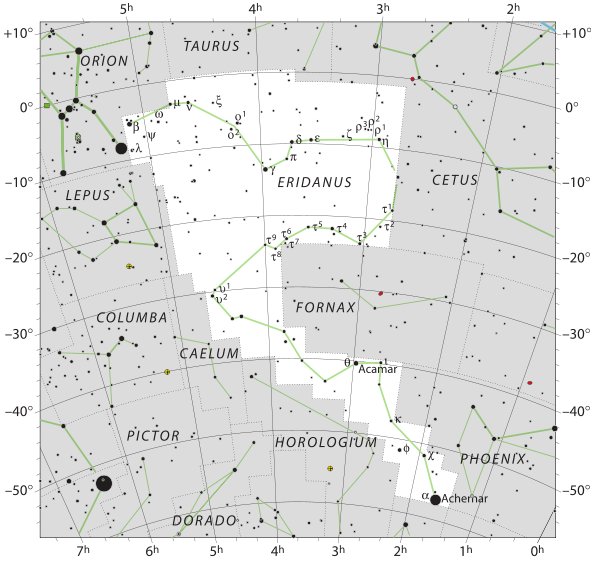
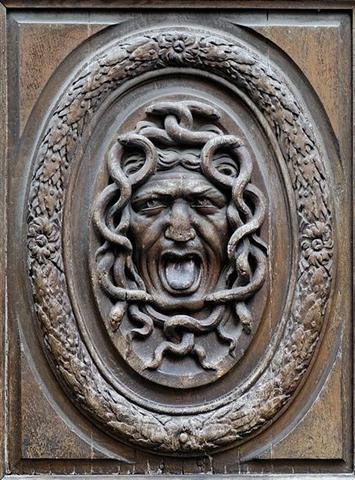 |
|
Oct 31 |
Nov 1 (Samhain) |
2 (306) |
3 |
|
ZUBEN ELGENUBI = α
Librae
(224.2), ξ Bootis, ο Lupi (224.5) |
KOCHAB (Kakkab,
Babylonian for Star) = β Ursae Min.
(225.0),
ξ Librae (225.7) |
KE KWAN (Cavalry Officer) =
β
Lupi
(226.3),
KE KWAN =
κ
Centauri (226.4),
ZUBEN ELAKRIBI (Claw of the Scorpion) =
δ
Librae
(226.8),
π¹
Oct.
(226.9)
*185.0 = *226.4 - *41.4 = "Sept 22 (265) =
equinox |
ω Bootis (227.2),
NEKKAR (Herdsman) = β Bootis
(227.3), σ Librae (227.5), π² Oct. (227.7),
NADLAT (Mean Little Ones) = ψ Bootis
(227.8), π Lupi (227.9)
*227 - *35 = *192 (MIMOSA) |
.jpg) |
... When the Sun reached to the ancient end of the
Eridanus river, at Acamar (*43) - 20 days
after the modern end at Achernar (*23) - he
was finished (haati) ...
 |
 |
 |
|
haati |
manu haati - kava |
DENEBOLA |
January 31 (→
Acamar) - 20 =
Achernar
(→
January 11).

... Possibly the Y-shape
and the wedge are alluding to such
instruments as those of the twin astronomers
in the illustration below ...
|
May 6 |
7 |
8 (*48) |
9 |
10
(130) |
11
→ Jan 31 |
 |
 |
 |
 |
 |
 |
|
Ea5-38 |
Ea5-39 |
Ea5-40 |
Ea5-41 (177) |
Ea5-42 |
Ea6-1 |
|
tana haati mai - te garu |
te kotia |
o te garu |
kotia |
hokohuki - koia ra |
Kua oho mai kua hokokuki mai - kua moe |
|
Garu. Surfing.
Garuru, to feel dizzy, seasick; to
have a sudden headache: he garuru te
puoko. Vanaga. 1. To swim over the
waves (see aruaru 2). P Mgv.:
garu, foam, froth. Mq.: kaú,
naútai, wave, billow. Pau.:
puhi-garu, a bubble of water. In
aruaru 2 is found another galu
derivative. The sense of this garu
is nowhere else encountered; the stem
means simply the waves and involves no
idea of swimming. We note, however, the
Viti galo to swim; un uncertain
identification. 2. Garu hoa, a
friend of either sex. PS Sa.: galu,
an number of young persons (galu
teine, galu taulele'a). To.:
? gauta, many in number. Data
fail for the comparison. The plural
sense of the Samoan does not appear in
Rapanui. The Tongan form involves
the rather infrequent loss of an inner
l and leaves the latter element
ta unexplained. Garuru,
headache, vertigo; puoko garuru,
migraine. P Mgv.: garuru, nausea
that persists. Mq.: naúú, kaúú,
headache, migraine. Churchill. [E:32]
Papa. 1.
Underground rock; motionless; rocky sea
bottom; large flat stone; figuratively:
tagata papa important man, author
of great works. 2. Wooden plank
currently used much like a surf-board in
the sport called garu; it was
formerly called papa gaatu mo te
garu, because it was made from dry
totora leaves woven into the
shape of a plank. 3. To line up things
side by side on a flat surface, for
instance, to line up fish on top of a
flat stone. Vanaga. Shoulderblade.
Papapapa, a chill, to shiver, to
tremble, to shudder. Churchill.

Koti. Kotikoti.
To cut with scissors (since this is an
old word and scissors do not seem to
have existed, it must mean something of
the kind). Vanaga. Kotikoti. To
tear; kokoti, to cut, to chop, to
hew, to cleave, to assassinate, to
amputate, to scar, to notch, to carve,
to use a knife, to cut off, to lop, to
gash, to mow, to saw; kokotiga kore,
indivisible; kokotihaga, cutting,
gash furrow. P Pau.: koti, to
chop. Mgv.: kotikoti, to cut, to
cut into bands or slices; kokoti,
to cut, to saw; akakotikoti, a
ray, a streak, a stripe, to make bars.
Mq.: koti, oti, to cut, to
divide. Ta.: oóti, to cut, to
carve; otióti, to cut fine.
Churchill. Pau.: Koti, to gush,
to spout. Ta.: oti, to rebound,
to fall back. Kotika, cape,
headland. Ta.: otiá, boundary,
limit. Churchill.
Tia. (Tiha G) .To
sew. T Mgv.: tia, to prick, to
pierce, to stick in. Churchill. Ta.:
tia, the lower belly. Mq.:
tia-kopu, pubes. Ma.: tia,
the lower abdomen. Tiahonu, to
piece together. Mq.: tuhonu, to
mend, to patch. Ma.: tuhonu, to
join. Churchill. Mq.: tiaha,
drinking cup. Ha.: kiaha, a cup,
a mug. Tikao, to dig out, to
disembowel. Ma.: tikaro, to dig
out of a hole. Churchill. |
|
ι
Persei (46.1),
MISAM (Next to the Pleiades) =
κ
Persei
(46.2),
GORGONEA QUARTA =
ω
Persei
(46.7),
BOTEIN (Pair of Bellies) =
δ
Arietis
(46.9) |
ζ Arietis (47.7) |
ZIBAL (Young Ostriches) = ζ
Eridani (48.0),
κ
Ceti (48.9) |
τ Arietis (49.7) |
ALGENIB PERSEI = α Persei (50.0), ο Tauri (50.2), ξ Tauri (50.8)
GIENAH (γ Corvi) |
σ Persei (51.6) |
|
Nov 4 |
5 |
6
(310 → 210) |
7 |
8 |
9 |
|
15h (228.3)
ZUBEN HAKRABIM (Claw of the Scorpion) =
ν
Librae
(228.3),
λ
Lupi (228.9) |
ω
Oct. (229.3),
ι
Librae (229.6),
κ
Lupi (229.7),
ζ
Lupi (229.8) |
Al Zubānā-14b (Claws)
χ
Bootis (230.3),
PRINCEPS =
δ
Bootis
(230.6),
ZUBEN ELSCHEMALI (Northern Claw) =
β
Librae
(230.8) |
μ
Lupi,
γ
Tr. Austr.
(231.3), ο Librae (231.8) |
ο
Cor. Borealis (232.0),
δ
Lupi (232.1),
φ¹,
ν²
Lupi (232.2),
ν¹
Lupi (232.3),
ε
Lupi (232.4),
φ²
Lupi (232.5),
PHERKAD (The Dim One of the Two Calves)
=
γ
Ursae Min.
(232.6),
ε
Librae (232.7),
η
Cor. Borealis (232.8),
υ
Lupi (232.9)
*191.0 = *232.4 - 41.4 |
ALKALUROPS (The Herdsman's Lance) =
μ
Bootis
(233.1),
ED ASICH (Male Hyena) =
ι
Draconis
(233.2) |
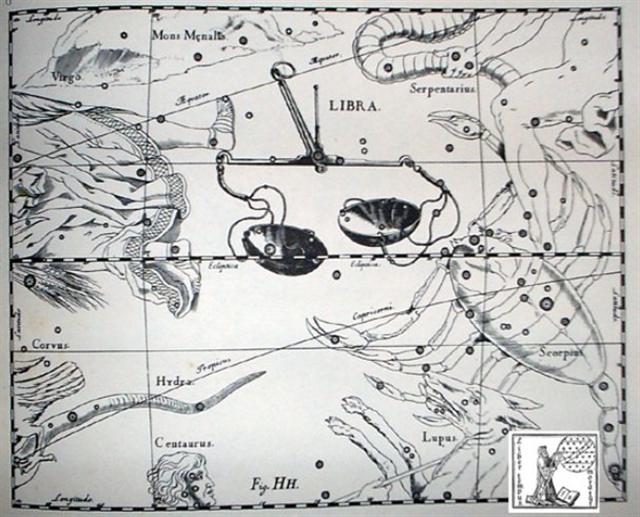 |
Alternatively we could say it implies adding 265
days. November 2 (306) + 265 = 571 = 365 + 206
(July 25).
But presumably we should instead count
210 (July
29) - anciently there were only 29 days in
January - as 100 days earlier than day 310
(November 6).
... They tightly swathed the
broken body in linen bandages, and when they
performed over it the rites that thereafter were
to be continued in Egypt in the ceremonial
burial of kings, Isis fanned the corpse with her
wings and Osiris revived, to become the ruler of
the dead. He now sits majestically in the
underworld, in the Hall of the Two Truths,
assisted by forty-two assessors, one from each
of the principal districts of Egypt; and there
he judges the souls of the dead. These confess
before him, and when their hearts have been
weighed in a balance against a feather, receive,
according to their lives, the reward of virtue
and the punishment of sin ...

We can see the
Heart in the scale
at left (at Horus)
... In the inscriptions
of Dendera, published by Dümichen, the
goddess Hathor is called 'lady of
every joy'. For once, Dümichen adds:
Literally ... 'the lady of every heart
circuit'. This is not to say that the
Egyptians had discovered the circulation of
the blood. But the determinative sign for
'heart' often figures as the plumb bob at
the end of a plumb line coming from a
well-known astronomical or surveying device,
the merkhet. Evidently, 'heart' is
something very specific, as it were the
'center of gravity' ... See Aeg.Wb. 2, pp.
55f. for sign of the heart (ib) as
expressing generally 'the middle, the center'´...
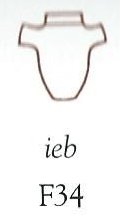
which should be in balance with the dark
object at the left hand of Seth (in
the right scale). The left hand of Horus
seems to be adjusting the balance between
the pair of scales by using what could be an
instrument (the
Square) for measuring the surface of the
earth (7):
... An iconographic study
by Jeff Kowalski suggests a cosmological
layout for the Nunnery. The higher placement
of the North Building, with its 13 exterior
doorways (reflecting the 13 layers of
heaven), and the celestial serpents
surmounting the huts identify it with the
celestial sphere. The iconography of the
West Building, with 7 exterior doorways (7
is the mystic number of the earth's
surface), and figures of Pawahtun -
the earth god as a turtle - indicate this to
be the Middleworld, the place of the sun's
descent into the Underworld.
The East Building has
mosaic elements reflecting the old war cult
of Teotihuacan, where tradition had
it that the sun was born; thus, this may
also be Middleworld, the place of the rising
sun. Finally, the South Building has 9
exterior doorways (the Underworld or
Xibalba had 9 layers), and has the
lowest placement in the compex; it thus
seems to be associated with death and the
nether regions ...
I.e., presumably for observing the meridian
transit of Caph (the Hand, β, *0) the
first star in W. The Cassiopeian W seems to
be indicated by the pair of Horus arms:
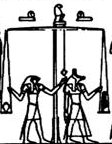

If so, then the head of Horus would corresponds to γ (Cih, the Whip) - as if it was the Sun still not born:
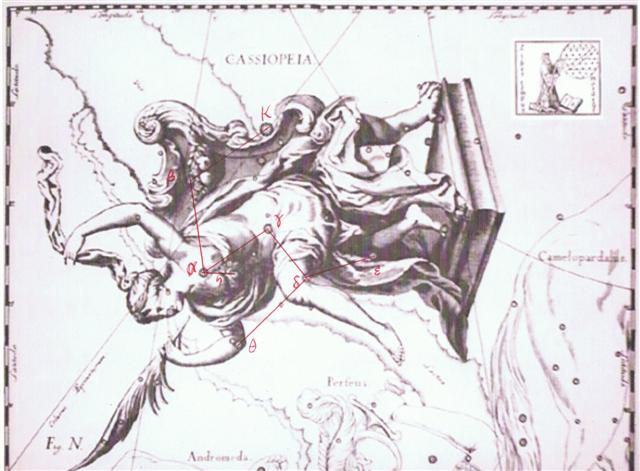
Horus represented the horuzon in the east and
the sething horizon in the west was Seth. The
ancient last day of January was day 29 and July
29 was the corresponding day in the other half
of the year. 210 (July 29) - 181 (Sirius) =
January 29.
... The manik, with
the tzab, or serpent's rattles as prefix,
runs across Madrid tz. 22 , the figures in the
pictures all holding the rattle; it runs across
the hunting scenes of Madrid tz. 61, 62, and
finally appears in all four clauses of tz. 175,
the so-called 'baptism' tzolkin. It seems
impossible, with all this, to avoid assigning
the value of grasping or receiving. But in the
final confirmation, we have the direct evidence
of the signs for East and West. For the East we
have the glyph Ahau-Kin, the Lord Sun,
the Lord of Day; for the West we have
Manik-Kin, exactly corresponding to the term
Chikin, the biting or eating of the Sun,
seizing it in the mouth.



The pictures (from Gates) show east, north,
west, and south; respectively (the lower two
glyphs) 'Lord' (Ahau) and 'grasp' (Manik).
Manik was the 7th day sign of the 20 and
Ahau the last ...
Thus we could expect Ea6-2 to in a way represent
the opposite of February 1.
|
May 12 (32 + 100) |
13 (315 - 182) |
14 |
15 (500) |
|
Nov 10 (314
→
π) |
11 |
12 |
13 (500 - 183) |
 |
 |
 |
 |
|
Ea6-2 (180) |
Ea6-3 |
Ea6-4 (182) |
Ea6-5 |
|
vaha mea |
koia |
kua vaha |
kiore |
|
Vaha.
Hollow; opening; space
between the fingers (vaha rima);
door cracks (vaha papare).
Vahavaha, to fight, to wrangle,
to argue with abusive words. Vanaga.
1. Space, before T; vaha takitua,
perineum. PS Mgv.: vaha, a
space, an open place. Mq.: vaha,
separated, not joined. Ta.: vaha,
an opening. Sa.: vasa, space,
interval. To.: vaha, vahaa,
id. Fu.: vasa, vāsaà,
id. Niuē: vahā.
2. Muscle, tendon;
vahavaha,
id. Vahahora
(vaha
1 - hora
2), spring. Vahatoga
(vaha
1 - toga
1), autumn. 3. Ta.:
vahavaha,
to disdain, to dislike. Ha.:
wahawaha,
to hate, to dislike. Churchill.
Mea.
1. Tonsil, gill (of
fish). 2. Red (probably because it
is the colour of gills); light red,
rose; also meamea. 3. To grow
or to exist in abundance in a place
or around a place: ku-mea-á te
maîka, bananas grow in abundance
(in this place); ku-mea-á te ka,
there is plenty of fish (in a
stretch of the coast or the sea);
ku-mea-á te tai, the tide is low
and the sea completely calm (good
for fishing); mau mea,
abundance. Vanaga. 1. Red;
ata mea,
the dawn.
Meamea,
red, ruddy, rubricund, scarlet,
vermilion, yellow;
ariga
meamea, florid;
kahu
meamea purple;
moni
meamea, gold;
hanuanua meamea, rainbow;
pua
ei meamea, to make
yellow.
Hakameamea, to redden, to
make yellow. PS Ta.:
mea,
red. Sa.:
memea, yellowish brown,
sere. To.:
memea, drab. Fu.:
mea,
blond, yellowish, red, chestnut. 2.
A thing, an object, elements (mee);
e
mea, circumstance;
mea ke,
differently, excepted, save, but;
ra mea,
to belong;
mea
rakerake, assault;
ko mea,
such a one;
a mea
nei, this;
a mea
ka, during;
a mea,
then;
no te
mea, because, since,
seeing that;
na te
mea, since;
a mea
era, that;
ko mea
tera, however, but.
Hakamea,
to prepare, to make ready. P Pau.,
Mgv., Mq., Ta.:
mea,
a thing. 3. In order that, for.
Mgv.:
mea, because, on
account of, seeing that, since. Mq.:
mea,
for. 4. An individual;
tagata
mea,
tagata
mee, an individual. Mgv.:
mea,
an individual, such a one. Mq., Ta.:
mea,
such a one. 5. Necessary, urgent;
e mea
ka, must needs be,
necessary;
e mea,
urgent. 6. Manners, customs. 7.
Mgv.:
ako-mea, a red fish.
8. Ta.:
mea, to do. Mq.:
mea,
id. Sa.:
mea,
id. Mao.:
mea,
id. Churchill.
|
|
No star listed (52) |
ψ
Persei (53.1)
ACRUX (α
CRUCIS) |
δ
Persei (54.7) |
Al Thurayya-27 (Many Little
Ones) /
Krittikā-3 (Nurses of Kārttikeya)
/
TAU-ONO (Six Stones)
ATIKS =
ο
Persei,
RANA (Frog) =
δ
Eridani
(55.1),
CELAENO (16 Tauri), ELECTRA (17), TAYGETA (19),
ν
Persei (55.3), MAIA (20), ASTEROPE (21), MEROPE (23)
(55.6) |
|
NUSAKAN (Pauper's Bowl) = β Cor.
Bor.
(234.0), κ¹ Apodis (234.3), ν Bootis
(234.7), ζ Librae (234.9) |
θ Cor. Borealis (235.3), γ Lupi
(235.6),
GEMMA = α Cor. Bor.,
ZUBEN ELAKRAB = γ Librae, QIN = δ
Serpentis, ε Tr. Austr.
(235.7), μ Cor. Borealis (235.8), υ
Librae (235.9)
SIRRAH (α Andromedae) |
φ Bootis (236.2), ω Lupi, τ Librae
(236.3), ψ¹ Lupi (236.7), ζ Cor.
Borealis (236.9) |
κ
Librae (237.2),
ι
Serpentis (237.4),
ψ²
Lupi,
ρ
Oct.
(237.5), γ Cor. Borealis, η Librae
(237.7), COR
SERPENTIS = α Serpentis
(237.9)
*196.0 = *237.4 - *41.4 |
|
... In other words, the ancient
Druidic religion based on the
oak-cult will be swept away by
Christianity and the door - the god
Llyr - will languish forgotten in
the Castle of Arianrhod, the
Corona Borealis. This helps us
to understand the relationship at
Rome of Janus and the White Goddess
Cardea who is ... the Goddess of
Hinges who came to Rome from Alba
Longa. She was the hinge on which
the year swung - the ancient Latin,
not the Etruscan year - and her
importance as such is recorded in
the Latin adjective cardinalis
- as we say in English 'of cardinal
importance - which was also applied
to the four main winds; for winds
were considered as under the sole
direction of the Great Goddess until
Classical times ... |
This way of coordinating (balancing) the
star position
makes sense, with the culmination of
Sirrah (*235) on one side and the
culmination of Acrux (*53
→ 235 - 182)
on the other side.
|
ALCYONE (*56 → 2 * 28) |
a1 |
32 |
32 |
|
BETELGEUZE (*88) |
a2 |
33 |
65 |
|
NAOS (*121
→
11 * 11) |
a3 |
35 |
100 |
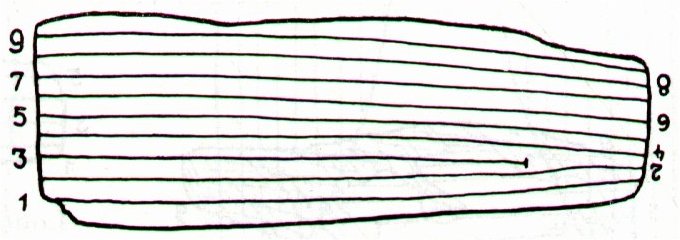 |
|
TANIA AUSTRALIS (*156 → 2 * 78) |
a4 |
36 |
78 |
|
PORRIMA (*191) |
a5 |
42 |
|
NUSAKAN (*156 + *78) |
a6 |
39 |
156 |
|
NASH
(*273 → 3 * 91) |
a7 |
39 |
Notably the Full Moon would ideally be at
the right ascension line of Nusakan
(*234.0) in Corona Borealis in the night
before Sirrah (*0.5) culminated at
21h. My list of star culminations contains
only a selected few of all the stars in my
star list, but we can assume also the
culmination (at 21h) of Caph (*0.5)
occurred in November 11.
.jpg)
|







.jpg)


















.jpg)